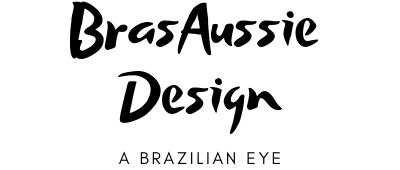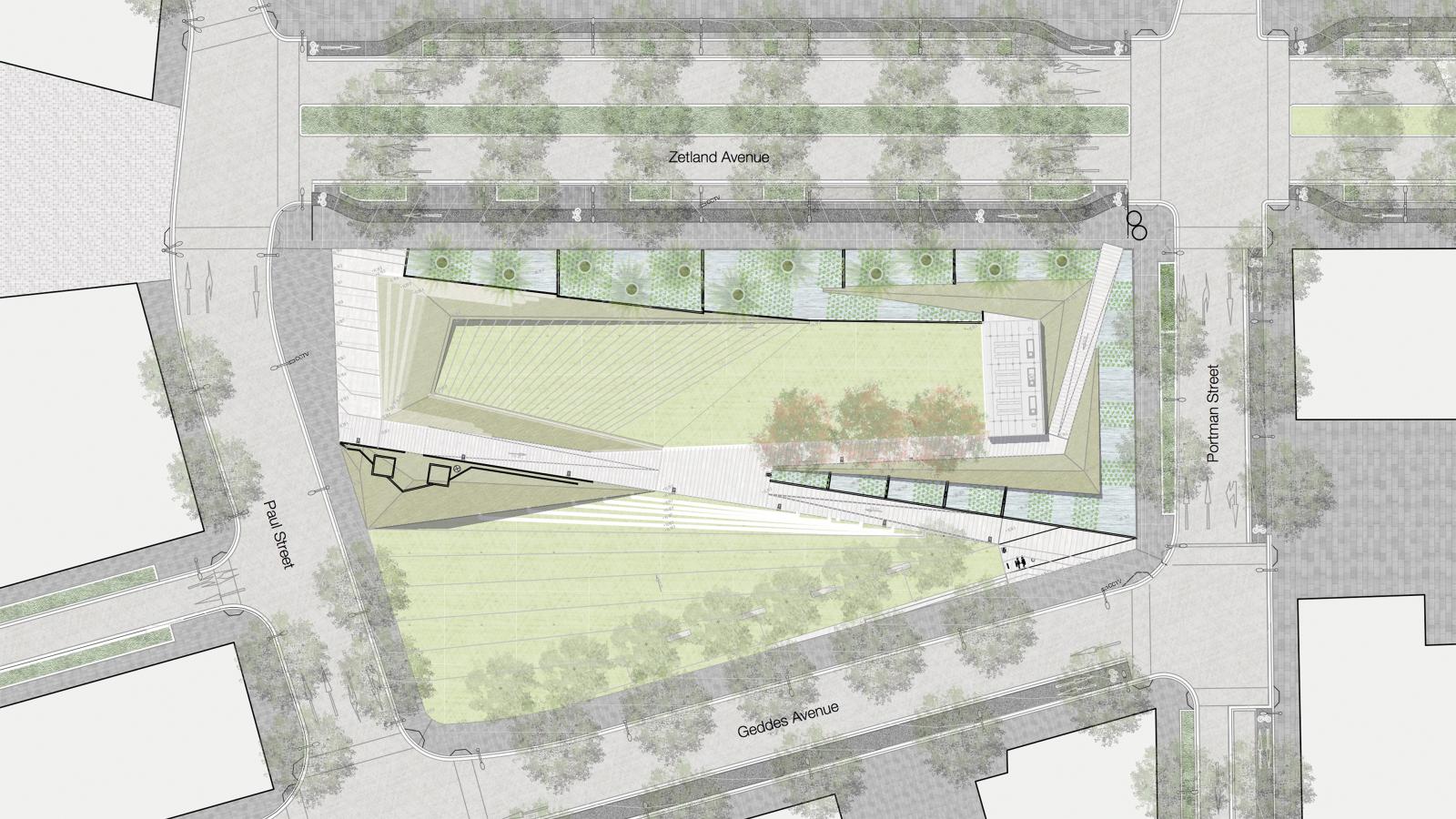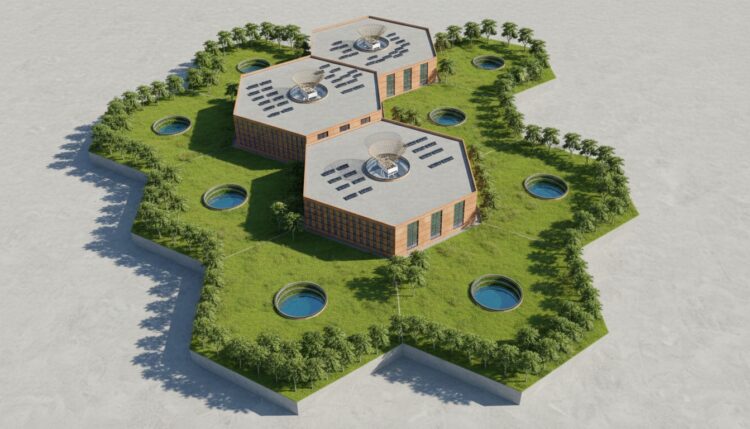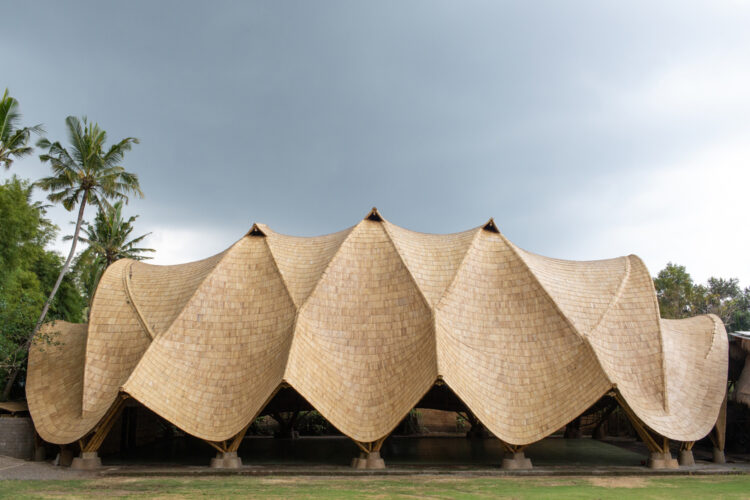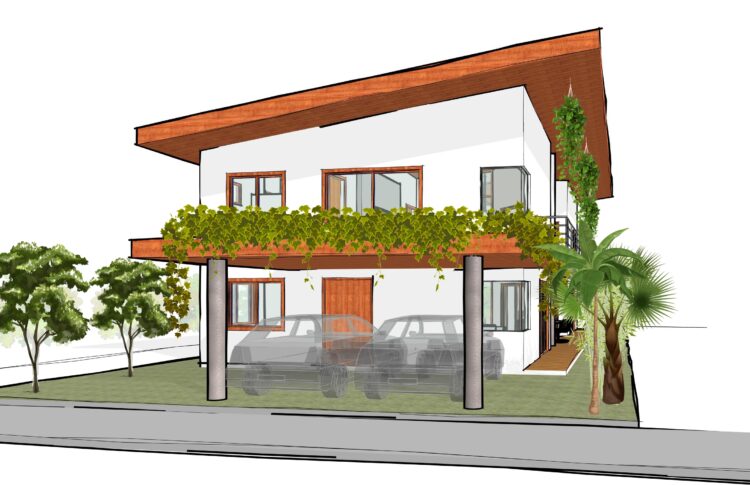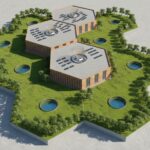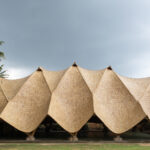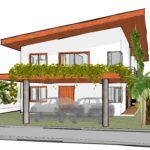Hi all! How is it going? How many times have you seen abandoned or poorly used public areas in your city? That happens quite often specially in our very populated cities where governments many times have other higher priorities. That is exactly the issue that the designers of the “The Drying Green” try to address.
In the bustling heart of Sydney, where skyscrapers reach for the sky and urban life pulsates with energy, an unexpected oasis of green tranquility emerges. The Drying Green, a masterpiece of urban design, offers a breath of fresh air and respite from the concrete jungle. Designed by the renowned landscape architecture firm McGregor Coxall, this innovative project redefines what a public space can be in a modern metropolis. In this blog post, we’ll explore the mesmerizing Drying Green and how it is making a significant impact on urban sustainability, public well-being, and community engagement.
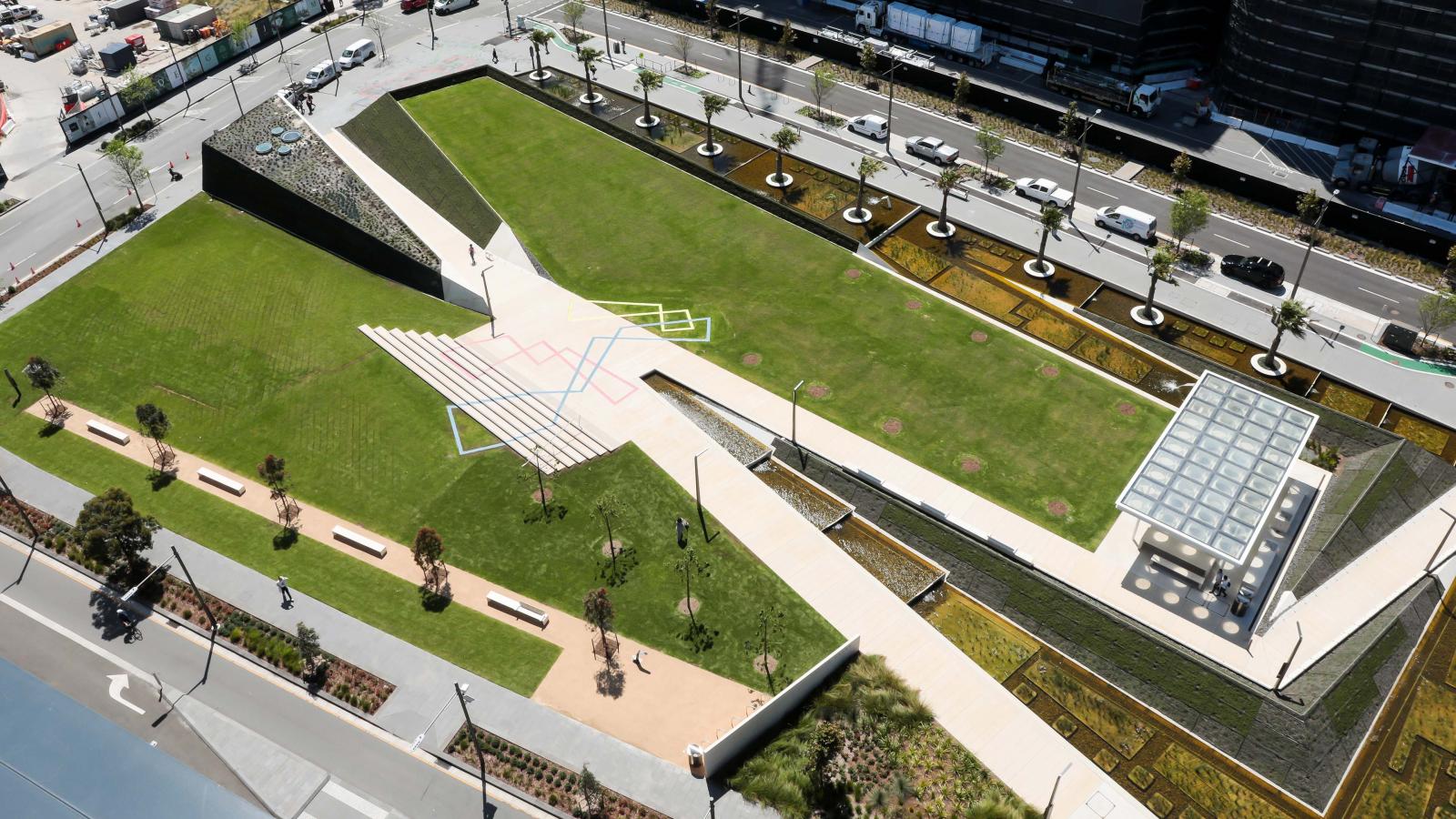
Overall view of the “The Drying Green” public area. Source: https://mcgregorcoxall.com/project-detail/311
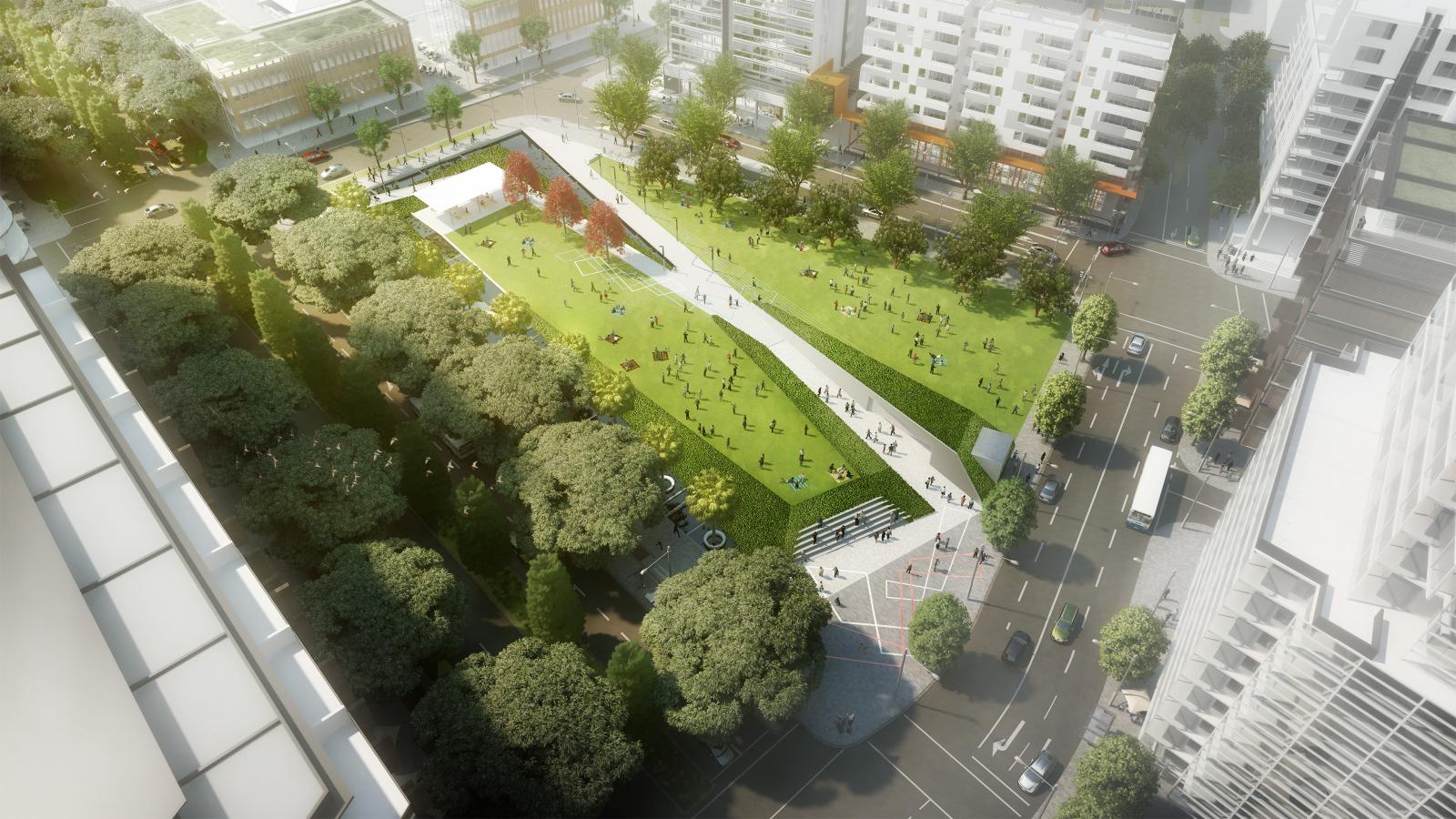
Project perspective of the area. Source: https://mcgregorcoxall.com/project-detail/311
Origins and Inspiration
The Drying Green was born out of a visionary idea to transform an old industrial site into a vibrant, green public space that reconnects people with nature and creates a hub for community activities. The site’s history as a drying field for the Sydney Water Board provided the inspiration for the project’s name, and it serves as a reminder of the area’s past while embracing a sustainable future.
Design Philosophy
McGregor Coxall, the award-winning design firm behind the Drying Green, had a clear vision for this project – to create a dynamic, sustainable, and inclusive urban space. Their approach emphasizes the fusion of nature and art, with an overarching goal to enhance the city’s ecological, social, and economic vitality.
Sustainability at Its Core
One of the most remarkable aspects of the Drying Green is its unwavering commitment to sustainability. The park serves as a model for sustainable urban design, incorporating several eco-friendly features:
- Stormwater Management: The park boasts a sophisticated stormwater management system that collects and filters rainwater, reducing urban runoff and pollution. The harvested rainwater is reused for irrigation, ensuring the park remains lush and green, even during the driest periods.
- Native Plantings: The Drying Green is adorned with a variety of native plant species, promoting biodiversity and supporting local wildlife. These plantings reduce the need for excessive maintenance, and they require less water compared to non-native species.
- Solar Energy: The park features solar-powered lighting and amenities, minimizing its carbon footprint and energy consumption. This not only reduces operational costs but also sets an example for sustainable energy use in urban environments.
- Recycled Materials: The park’s design incorporates recycled and repurposed materials, promoting the principles of the circular economy. This sustainable approach extends the life of materials and reduces waste.
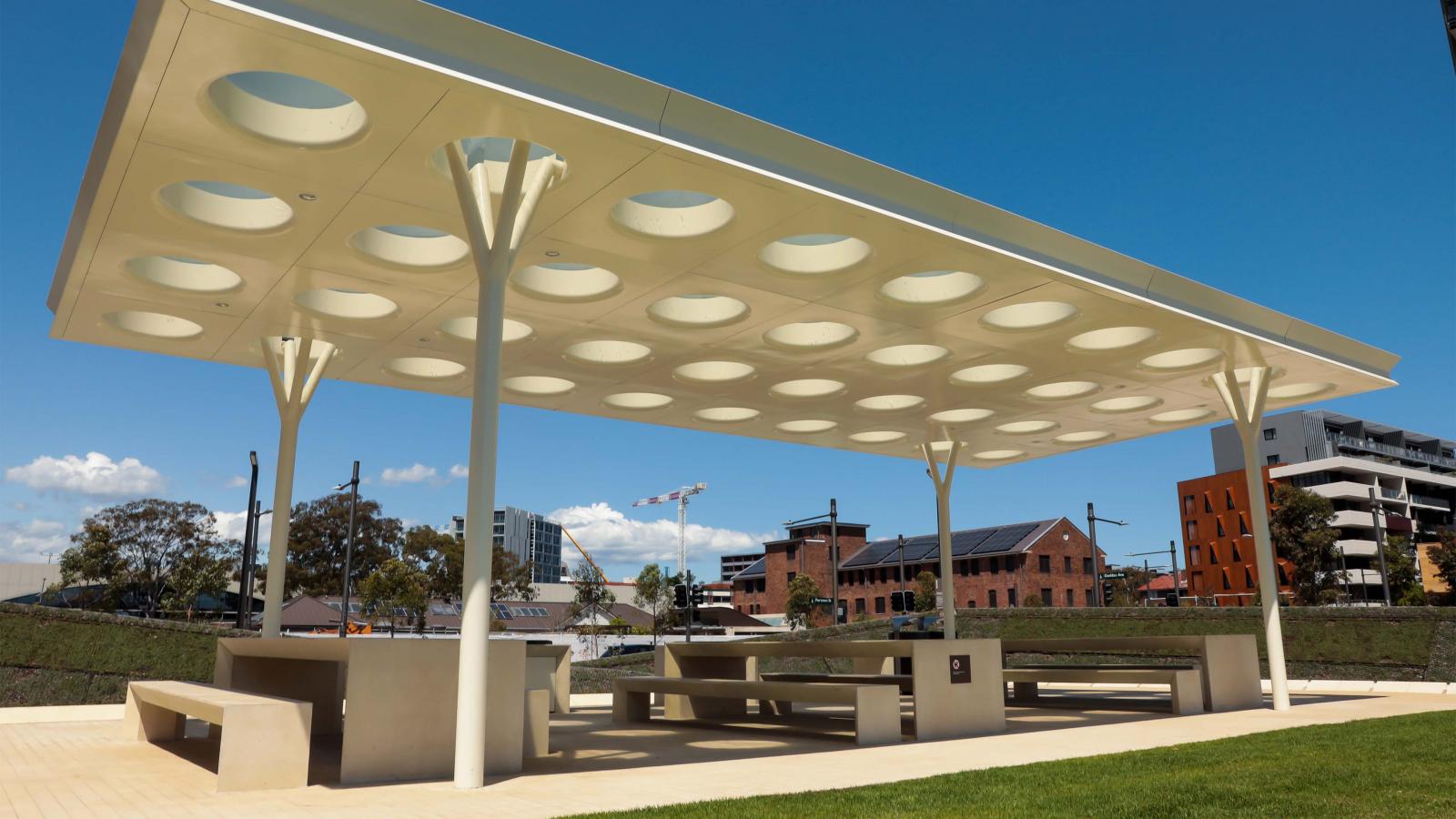
Shaded community area in the park. Source: https://mcgregorcoxall.com/project-detail/311
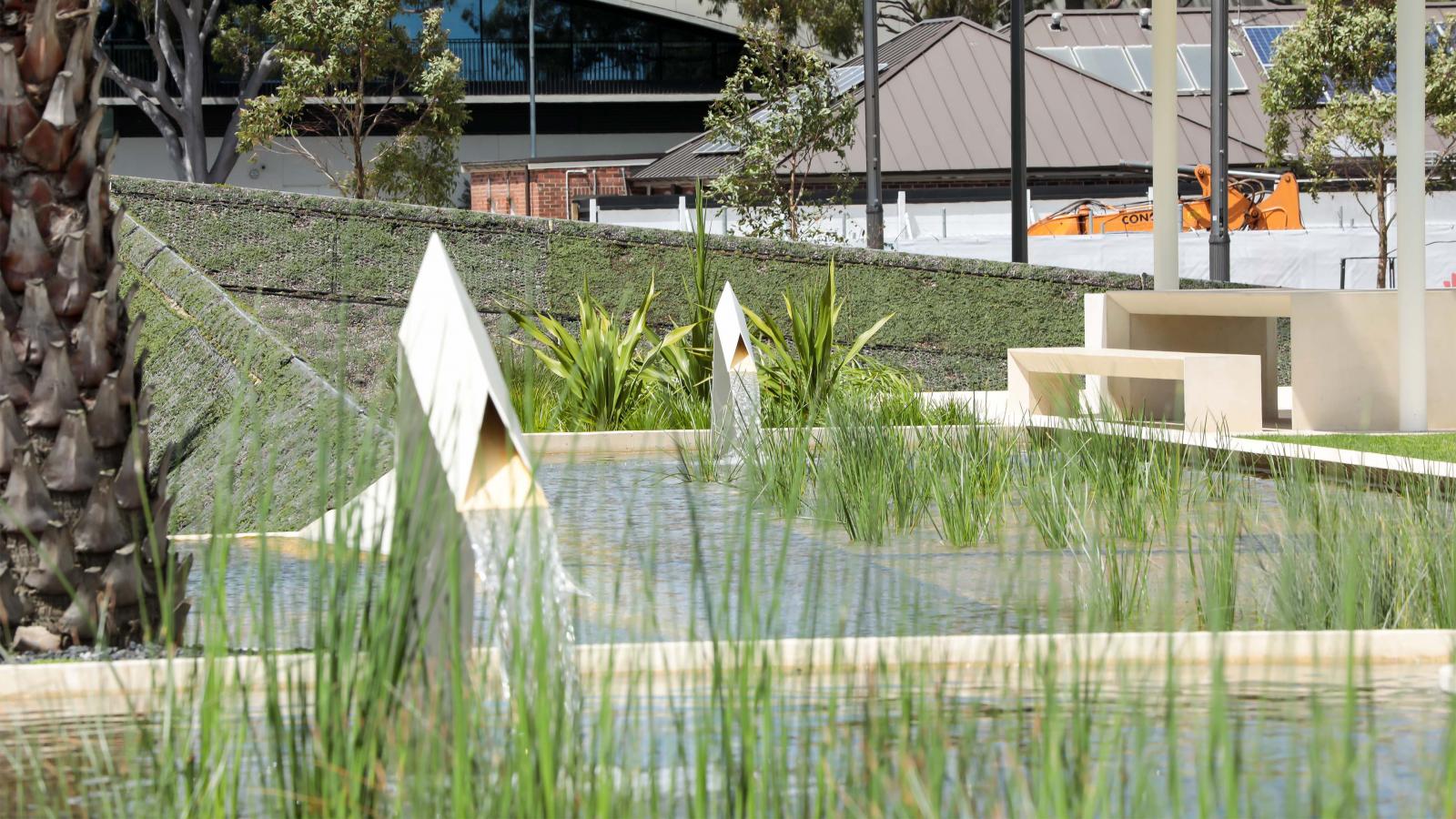
The park’s sophisticated stormwater management system that collects and filters rainwater. Source: https://mcgregorcoxall.com/project-detail/311
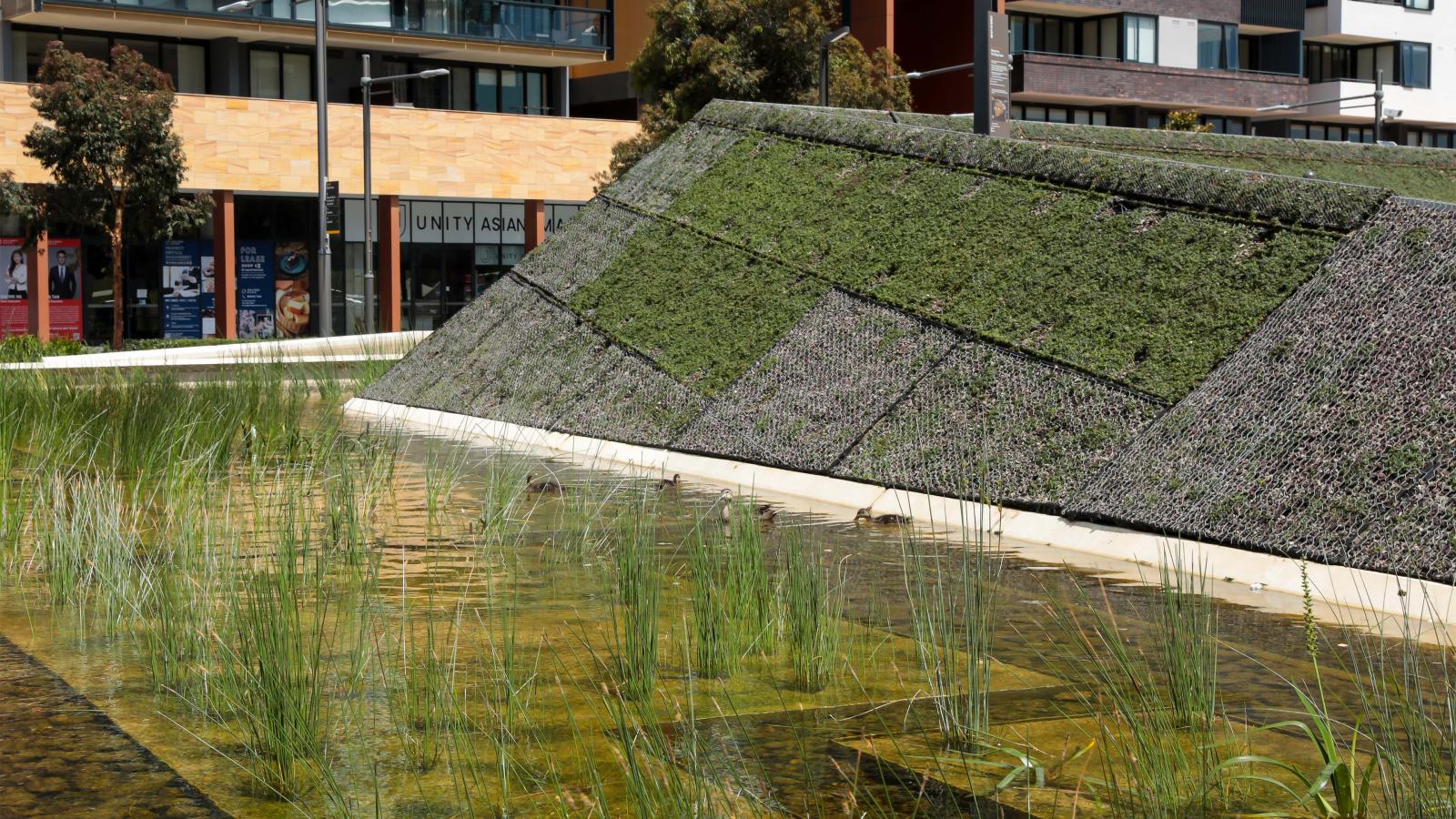
The park’s sophisticated stormwater management system that collects and filters rainwater. Source: https://mcgregorcoxall.com/project-detail/311
Engaging Public Spaces
The Drying Green is more than just a patch of greenery; it’s a thriving public space designed to foster community engagement and well-being. Several features make it an inviting and interactive destination for residents and visitors alike:
- Amphitheater: A central amphitheater provides a space for outdoor performances, cultural events, and community gatherings. It’s a perfect spot to enjoy a sunny day or attend a local concert.
- Playground: A state-of-the-art children’s playground ensures that the park is family-friendly, inviting parents and children to enjoy quality time in a natural setting.
- Fitness Equipment: The park is equipped with fitness stations and walking paths, promoting a healthy and active lifestyle. This, combined with the surrounding greenery, offers a serene and inspiring workout environment.
- Art Installations: The Drying Green features artistic installations that add character and intrigue to the space, making it not just a park but an outdoor gallery of creative expression.
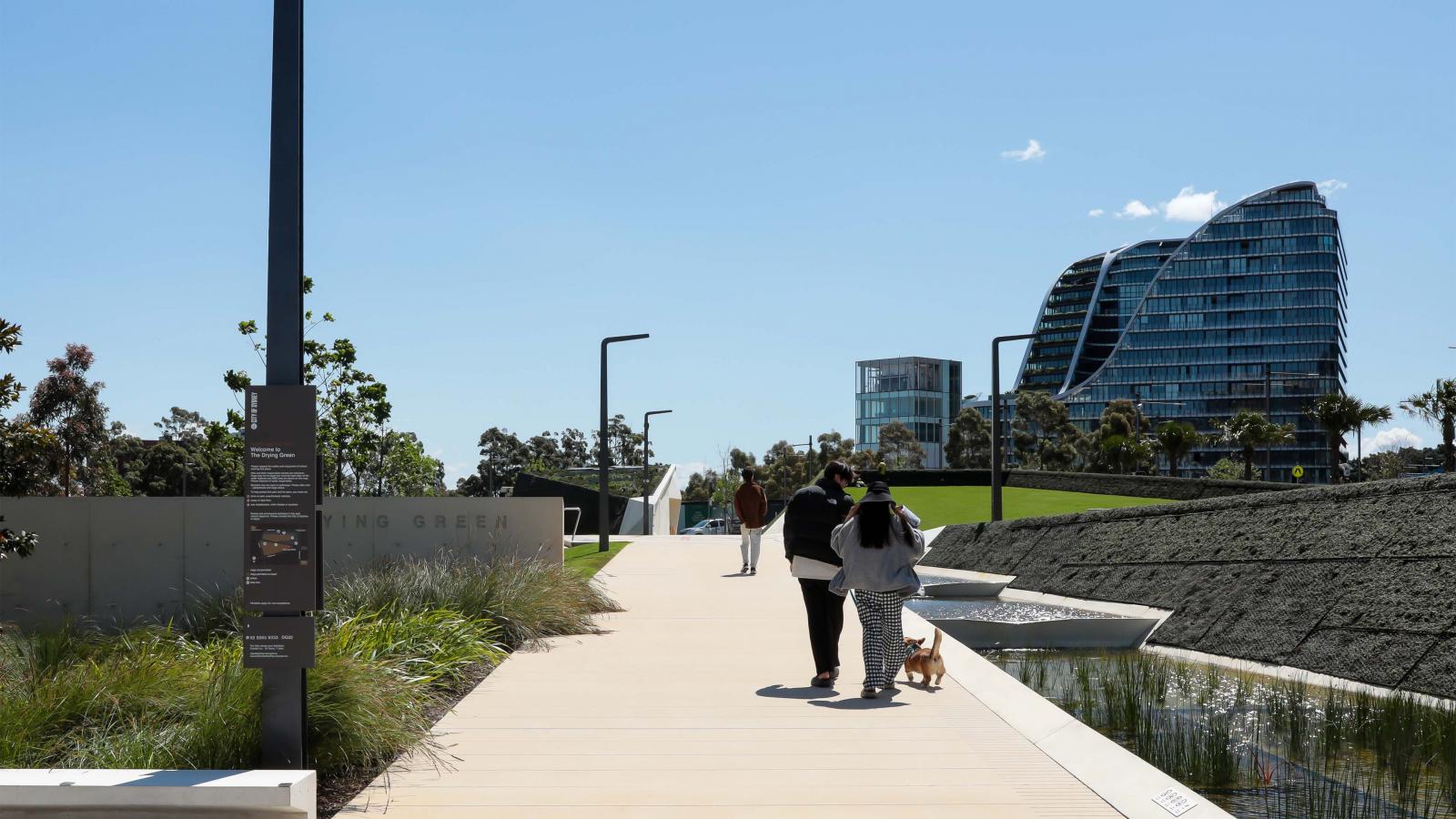
The park’s entrance view with the cityscape in the background. Source: https://mcgregorcoxall.com/project-detail/311
Community-Driven Design
The Drying Green’s success can be attributed, in part, to the involvement of the local community in its design and development. The project engaged with residents and stakeholders throughout the planning and implementation process, ensuring that the park reflects the desires and needs of the community.
Community gardens, for instance, offer residents an opportunity to participate directly in the park’s maintenance and development. This level of community involvement fosters a sense of ownership and pride in the park, reinforcing its role as a central gathering place for residents.
Fostering Well-Being
The Drying Green’s thoughtful design extends beyond aesthetics and sustainability. It also prioritizes the well-being of its visitors. The integration of nature and greenery into the urban environment has been shown to have numerous positive effects on mental and physical health. Here’s how the Drying Green contributes to the well-being of its users:
- Stress Reduction: The calming influence of green spaces can help reduce stress and anxiety, providing an escape from the fast-paced urban lifestyle.
- Physical Activity: The presence of fitness stations, walking paths, and open spaces encourages physical activity, contributing to healthier lifestyles.
- Social Interaction: The park’s communal areas, such as the amphitheater and playground, promote social interaction, helping to strengthen community bonds.
- Access to Nature: For city dwellers, the Drying Green provides easy access to nature, which has been linked to improved mental well-being and increased happiness.
Impact on the City
The Drying Green’s impact extends beyond its immediate vicinity. It serves as a model for sustainable urban development and public space design, inspiring other cities to invest in green, community-oriented projects.
The park has also positively influenced the surrounding area by increasing property values and driving economic growth. Local businesses benefit from increased foot traffic, and the park has become a destination for both residents and tourists, boosting tourism and local commerce.
Conclusion
The Drying Green in Sydney, designed by McGregor Coxall, is an extraordinary testament to the potential of urban spaces. By combining sustainability, community engagement, and well-being, it has redefined the role of public spaces in modern cities. As an oasis in the heart of Sydney, the Drying Green showcases what can be achieved when visionary design meets environmental consciousness, social inclusion, and community collaboration. This urban oasis is not just a park; it’s a symbol of a more sustainable and connected urban future. ♣
